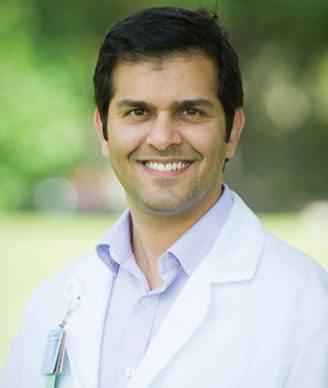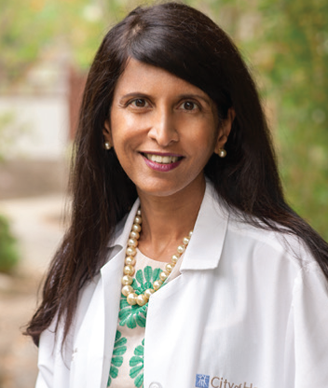POINT: Routine Use of Autologous Stem Cell Transplantation in Multiple Myeloma
Results of important studies addressing the optimal consolidation regimen and choice and duration of maintenance therapy are eagerly awaited, but it is evident that ASCT is imperative in the treatment of younger patients with multiple myeloma.
Oncology (Williston Park). 30(8):747-748.

Nitya Nathwani, MD

Amrita Y. Krishnan, MD

ASCT is imperative in the treatment of younger patients.
Multiagent induction chemotherapy leads to high response rates in multiple myeloma. The phase III Southwest Oncology Group trial involving 525 patients established lenalidomide, bortezomib, and dexamethasone (RVD) as a preferred induction regimen; in this trial, RVD demonstrated an overall response rate of 81.5%, with 15.7% of responses complete responses (CR), and 27.8% very good partial responses (VGPR).[1] Nonetheless, autologous stem cell transplantation (ASCT) still is and will remain a mainstay of therapy, with 6,300 transplants done in the United States for myeloma in 2013.[2] Phase III trials continue to support the use of high-dose chemotherapy over conventional therapy, even with novel agents.
An Italian trial by Palumbo et al[3] showed a progression-free survival (PFS) and overall survival (OS) benefit for ASCT with high-dose melphalan compared with melphalan, prednisone, and lenalidomide (MPR). Another multicenter European trial[4] of 389 patients treated with lenalidomide plus dexamethasone induction, then randomized to consolidation with either cyclophosphamide, lenalidomide, and dexamethasone (CRD) or ASCT, showed a significant improvement in PFS in the ASCT arm as compared with the CRD arm (43.3 vs 28.6 months) at a median follow-up of 52 months. OS at 4 years was also significantly prolonged in the ASCT arm compared with the chemotherapy arm (86% vs 73%). Although an important limitation of both these studies was the fact that neither included any proteasome inhibitors, they support the use of early ASCT. Most recently, an interim analysis was presented of the Intergroupe Francophone du Myelome/Dana-Farber Cancer Institute (IFM/DFCI) study involving 700 patients with multiple myeloma treated with 3 cycles of RVD induction followed by randomization to early transplantation (after cycle 3 of RVD) vs delayed transplantation (planned for time of relapse or progression).[5] Patients randomized to the early transplant arm received 2 cycles of post-transplant RVD consolidation, while those in the delayed transplant arm received 5 additional cycles of RVD. Patients in both arms received lenalidomide maintenance for 1 year. There was a significant improvement in the 4-year PFS rate in favor of the early transplant arm: 47% vs 35% (P < .001). It was notable that the PFS benefit was seen across all subgroups, including in patients with high-risk disease (defined as t(4;14), deletion 17p, or t(14;16)).
Perhaps the biggest benefit of transplantation is the depth of response, which may ultimately translate to a survival benefit. In the IFM/DFCI 2009 trial, patients in the early transplant arm had a significantly higher CR rate (58% vs 46%; P < .01) and a higher rate of minimal residual disease (MRD) negativity (80% vs 65%; P < .001) by next-generation sequencing.[5] The 3-year PFS rate was significantly prolonged in MRD-negative vs MRD-positive patients (83% vs 53%), and this was further improved following maintenance.[6]
Lastly, physicians must recognize that by delaying transplant, patients may ultimately lose the window of opportunity for prolonged PFS. Gay et al, in the study of consolidation with CRD vs melphalan followed by ASCT, demonstrated that despite stem cell collection in all patients prior to consolidation, ASCT was performed at the time of relapse in only 43% of patients in the chemotherapy arm.[4] Similarly, in the Palumbo et al study of MPR vs ASCT, only 63% of patients in the MPR group underwent ASCT at the time of relapse, despite stem cell collection in all patients.[3]
Results of important studies addressing the optimal consolidation regimen (eg, Blood and Marrow Transplant Clinical Trials Network protocol 0702) and choice and duration of maintenance therapy are eagerly awaited, but it is evident that ASCT is imperative in the treatment of younger patients with multiple myeloma. Several studies have shown significant prolongation in PFS with early transplantation, and have demonstrated that delayed transplantation may not be feasible in a large proportion of patients. The major benefit of ASCT may be the ability to obtain MRD negativity in a higher proportion of patients. In summary, the data are compelling for establishing the continued vital role of transplantation in the era of novel agents.
Financial Disclosure:Dr. Krishnan serves on speakers bureaus for Celgene, Janssen, Onyx, and Takeda; and serves as a consultant to Celgene and Takeda. Dr. Nathwani has no significant financial interest in or other relationship with the manufacturer of any product or provider of any service mentioned in this article.
References:
1. Durie B, Hoering A, Rajkumar SV, et al. Bortezomib, lenalidomide and dexamethasone vs. lenalidomide and dexamethasone in patients (pts) with previously untreated multiple myeloma without an intent for immediate autologous stem cell transplant (ASCT): results of the randomized phase III trial SWOG S0777. Blood. 2015;126:abstr 25.
2. Health Resources and Services Administration; US Department of Health and Human Services. US transplant data by disease report. http://bloodcell.transplant.hrsa.gov/RESEARCH/Transplant_Data/US_Tx_Data/Data_by_Disease/national.aspx. Accessed July 13, 2016.
3. Palumbo A, Cavallo F, Gay F, et al. Autologous transplantation and maintenance therapy in multiple myeloma. N Engl J Med. 2014;371:895-905.
4. Gay F, Oliva S, Petrucci MT, et al. Chemotherapy plus lenalidomide versus autologous transplantation, followed by lenalidomide plus prednisone versus lenalidomide maintenance, in patients with multiple myeloma: a randomised, multicentre, phase 3 trial. Lancet Oncol. 2015;16:1617-29.
5. Attal M, Lauwers-Cances V, Hulin C, et al. Autologous transplantation for multiple myeloma in the era of new drugs: a phase III study of the Intergroupe Francophone du Myelome (IFM/DFCI 2009 trial). Blood. 2015;126:abstr 391.
6. Avet-Loiseau H, Corre J, Lauwers-Cances V, et al. Evaluation of minimal residual disease (MRD) by next generation sequencing (NGS) is highly predictive of progression free survival in the IFM/DFCI 2009 trial. Blood. 2015;126:abstr 191.

Newsletter
Stay up to date on recent advances in the multidisciplinary approach to cancer.